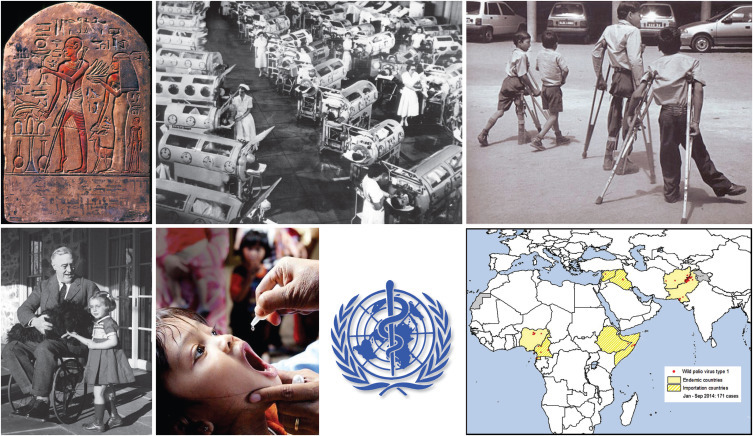Figure 1.5.

The World Health Organization Global Polio Eradication Initiative aims for global eradication of poliomyelitis by about 2018. The Initiative is led by the World Health Organization, UNICEF, and the Rotary and Gates Foundations; it has reduced the number of cases from the many thousands per year to less than 100 (359 cases in 2014; 74 cases in 2015). Polio will be the third disease globally eradicated, after smallpox and rinderpest. The most important step in polio eradication is interruption of endemic transmission by universal infant vaccination using oral vaccine (OPV; often by organizing “national immunization days”), supplementary IPV vaccination campaigns where needed, intensive surveillance of cases of flaccid paralysis, and in some places detection of virus in sewage. Figures (clockwise from top left). An Egyptian stele (slab) thought to depict a polio victim—18th Dynasty (1403–1365 BC); patients with permanent respiratory muscle paralysis after recovery from poliomyelitis would spend the rest of their lives requiring assisted respiration (immersed in an “iron lung”); patients with permanent lower limb weakness following poliomyelitis; those remaining countries reporting cases of poliomyelitis in 2014; oral administration of polio vaccine; in 1921, 39-year-old Franklin D. Roosevelt was diagnosed with poliomyelitis and was left with permanent paralysis from the waist down, but was rarely photographed in a wheelchair. He was elected US president in 1932.
